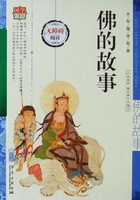Similar forms were found in Mimulus luteus and Nicotiana (In Pisum sativum also the crossing of two individuals of the same variety produced no advantage; Darwin attributed this to the fact that the plants had for several generations been self-fertilised and in each generation cultivated under almost the same conditions. Tschermak ("Ueber kunstliche Kreuzung an Pisum sativum") afterwards recorded the same result; but he found on crossing different varieties that usually there was no superiority as regards height over the products of self-fertilisation, while Darwin found a greater height represented by the ratios 100:75 and 100:60.), types which, after self-fertilisation, have an enhanced power of seed-production and of attaining a greater height than the plants of the corresponding generation which are crossed together and self-fertilised and grown under the same conditions. "Some observations made on other plants lead me to suspect that self-fertilisation is in some respects beneficial; although the benefit thus derived is as a rule very small compared with that from a cross with a distinct plant." ("Cross and Self fertilisation", page 350.)We are as ignorant of the reason why plants behave differently when crossed and self-fertilised as we are in regard to the nature of the differentiation of the sexual cells, which determines whether a union of the sexual cells will prove favourable or unfavourable.
It is impossible to discuss the different results of cross-fertilisation;one point must, however, be emphasised, because Darwin attached considerable importance to it. It is inevitable that pollen of different kinds must reach the stigma. It was known that pollen of the same "species" is dominant over the pollen of another species, that, in other words, it is prepotent. Even if the pollen of the same species reaches the stigma rather later than that of another species, the latter does not effect fertilisation.
Darwin showed that the fertilising power of the pollen of another variety or of another individual is greater than that of the plant's own pollen.
("Cross and Self fertilisation", page 391.) This has been demonstrated in the case of Mimulus luteus (for the fixed white-flowering variety) and Iberis umbellata with pollen of another variety, and observations on cultivated plants, such as cabbage, horseradish, etc. gave similar results.
It is, however, especially remarkable that pollen of another individual of the same variety may be prepotent over the plant's own pollen. This results from the superiority of plants crossed in this manner over self-fertilised plants. "Scarcely any result from my experiments has surprised me so much as this of the prepotency of pollen from a distinct individual over each plant's own pollen, as proved by the greater constitutional vigour of the crossed seedlings." (Ibid. page 397.) Similarly, in self-fertile plants the flowers of which have not been deprived of the male organs, pollen brought to the stigma by the wind or by insects from another plant effects fertilisation, even if the plant's own pollen has reached the stigma somewhat earlier.
Have the results of his experimental investigations modified the point of view from which Darwin entered on his researches, or not? In the first place the question is, whether or not the opinion expressed in the Orchid book that there is "Something injurious" connected with self-fertilisation, has been confirmed. We can, at all events, affirm that Darwin adhered in essentials to his original position; but self-fertilisation afterwards assumed a greater importance than it formerly possessed. Darwin emphasised the fact that "the difference between the self-fertilised and crossed plants raised by me cannot be attributed to the superiority of the crossed, but to the inferiority of the self-fertilised seedlings, due to the injurious effects of self-fertilisation." (Ibid. page 437.) But he had no doubt that in favourable circumstances self-fertilised plants were able to persist for several generations without crossing. An occasional crossing appears to be useful but not indispensable in all cases; its sporadic occurrence in plants in which self-pollination habitually occurs is not excluded. Self-fertilisation is for the most part relatively and not absolutely injurious and always better than no fertilisation. "Nature abhors perpetual self-fertilisation" (It is incorrect to say, as a writer has lately said, that the aphorism expressed by Darwin in 1859 and 1862, "Nature abhors perpetual self-fertilisation," is not repeated in his later works. The sentence is repeated in "Cross and Self fertilisation" (page 8), with the addition, "If the word perpetual had been omitted, the aphorism would have been false. As it stands, I believe that it is true, though perhaps rather too strongly expressed.") is, however, a pregnant expression of the fact that cross-fertilisation is exceedingly widespread and has been shown in the majority of cases to be beneficial, and that in those plants in which we find self-pollination regularly occurring cross-pollination may occasionally take place.
An attempt has been made to express in brief the main results of Darwin's work on the biology of flowers. We have seen that his object was to elucidate important general questions, particularly the question of the significance of sexual reproduction.
It remains to consider what influence his work has had on botanical science. That this influence has been very considerable, is shown by a glance at the literature on the biology of flowers published since Darwin wrote. Before the book on orchids was published there was nothing but the old and almost forgotten works of Kolreuter and Sprengel with the exception of a few scattered references. Darwin's investigations gave the first stimulus to the development of an extensive literature on floral biology.















